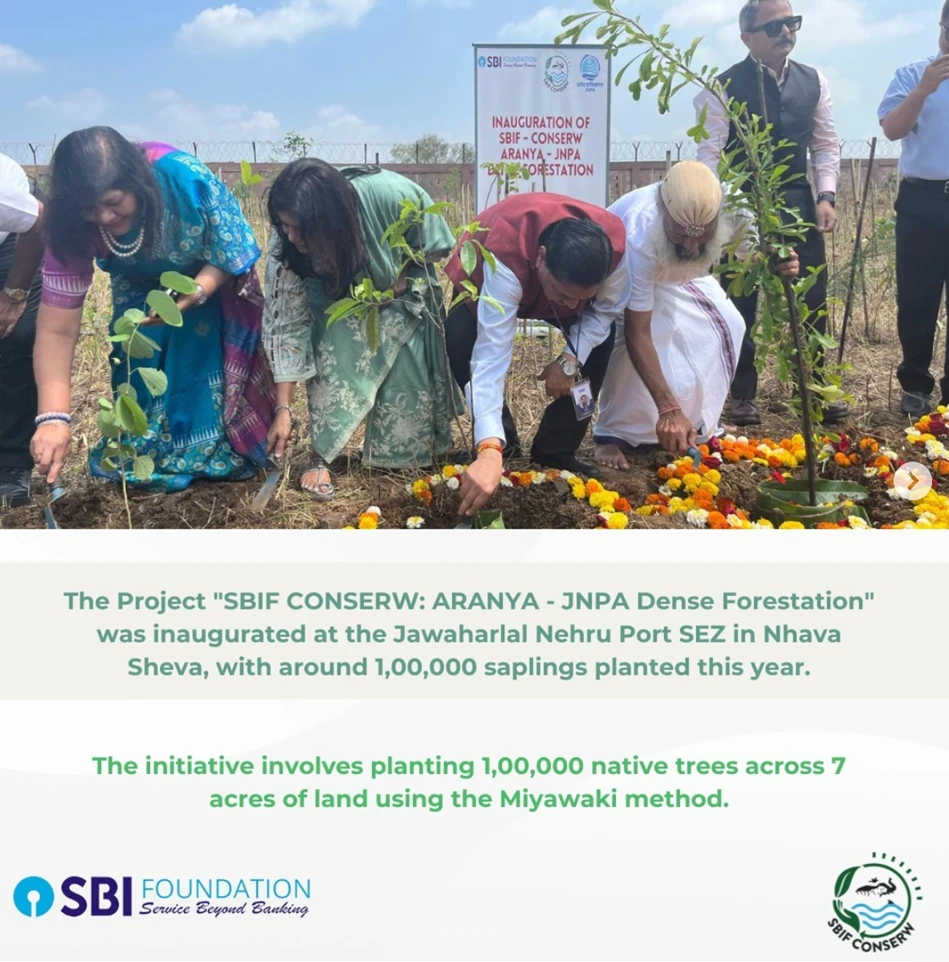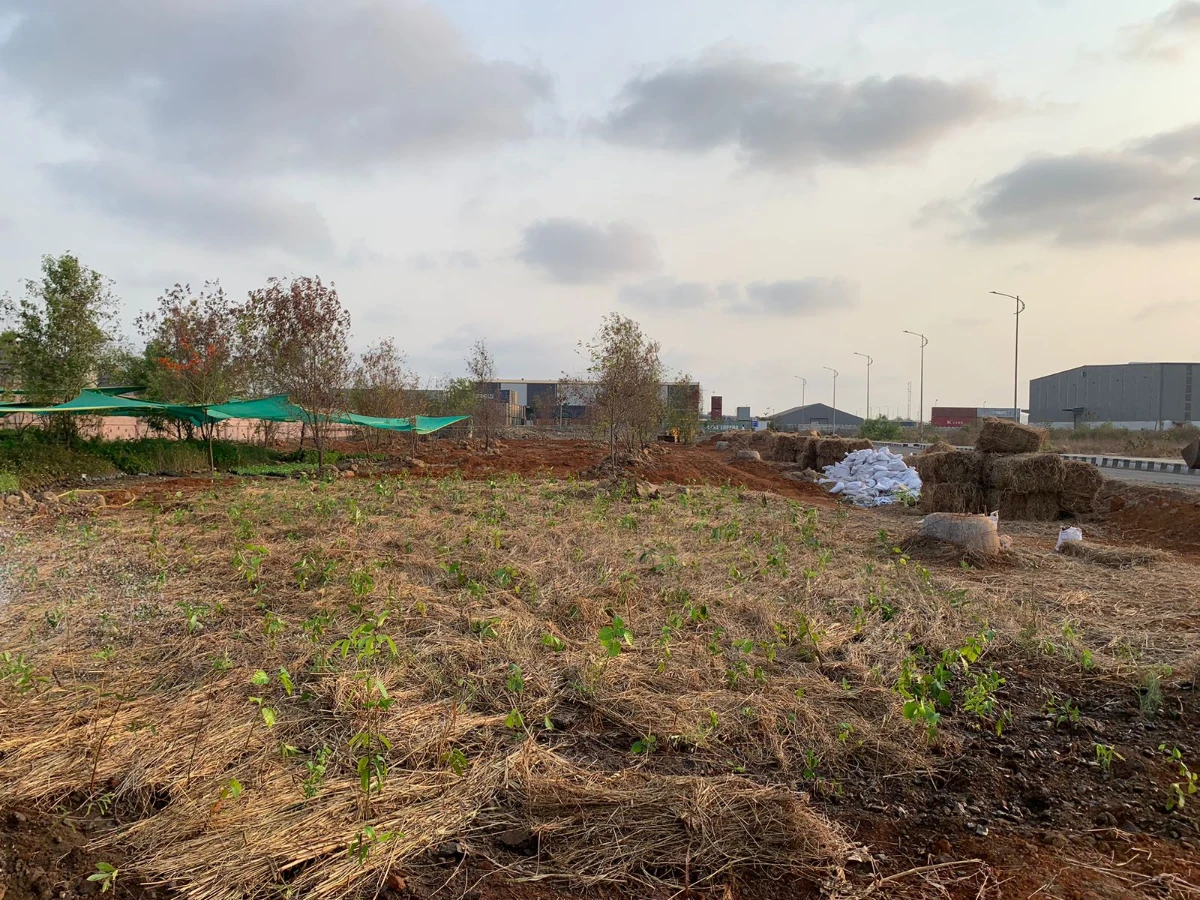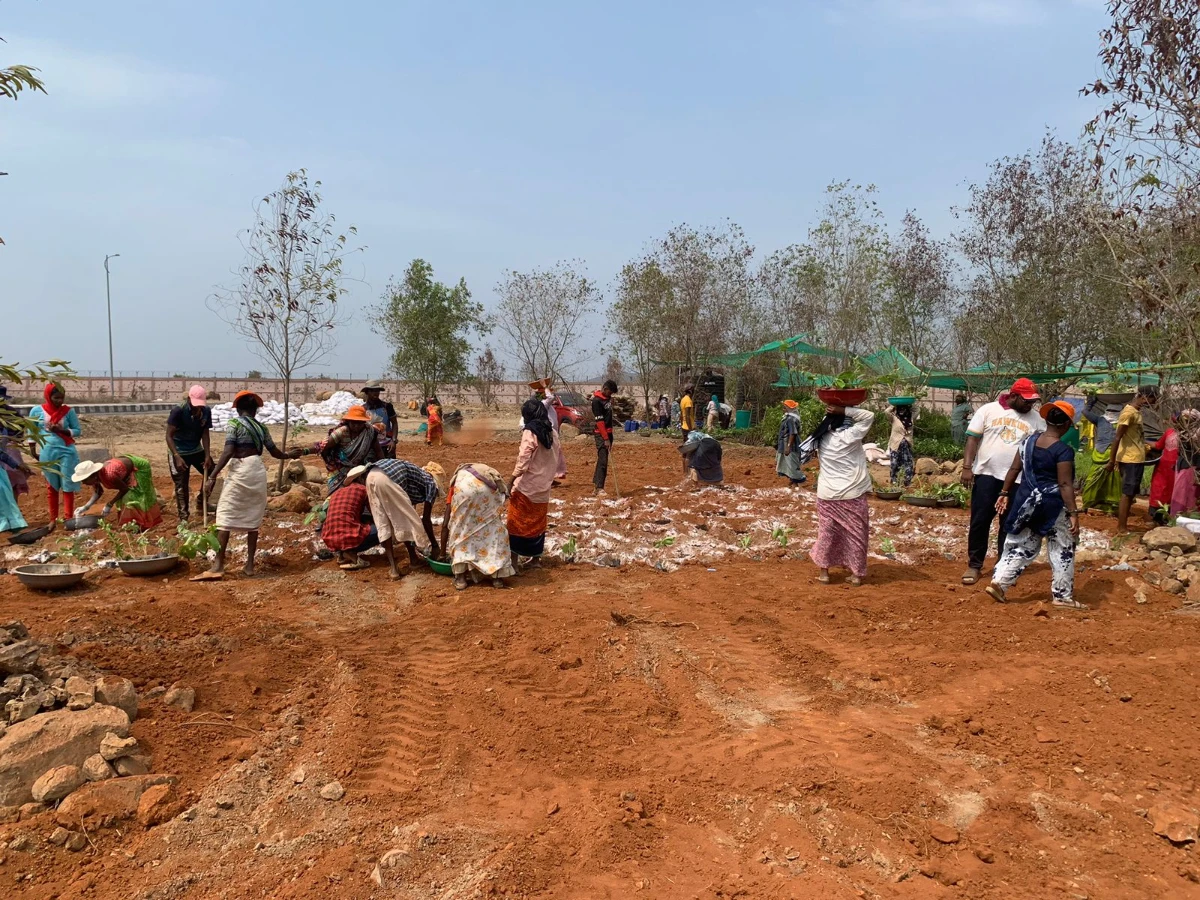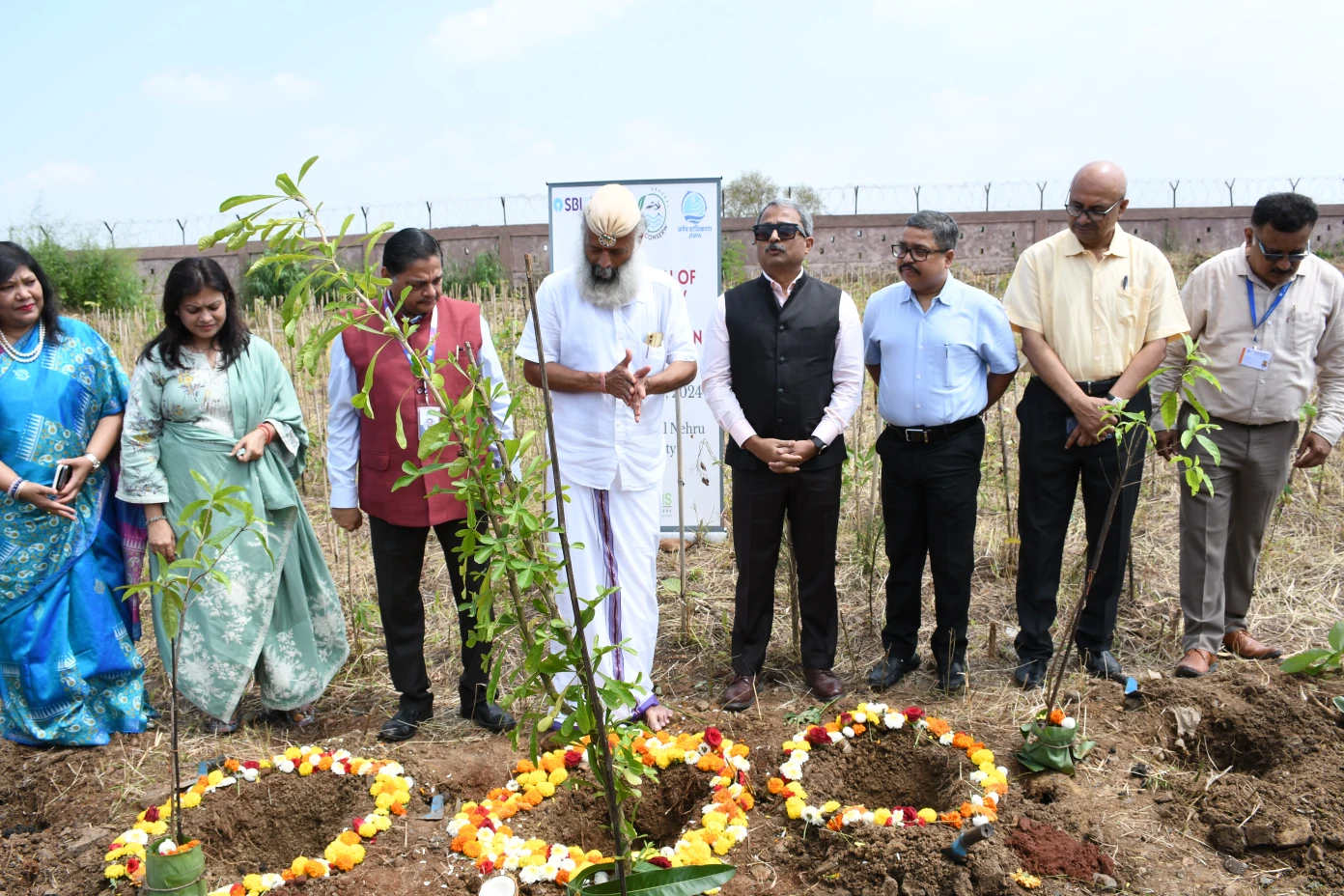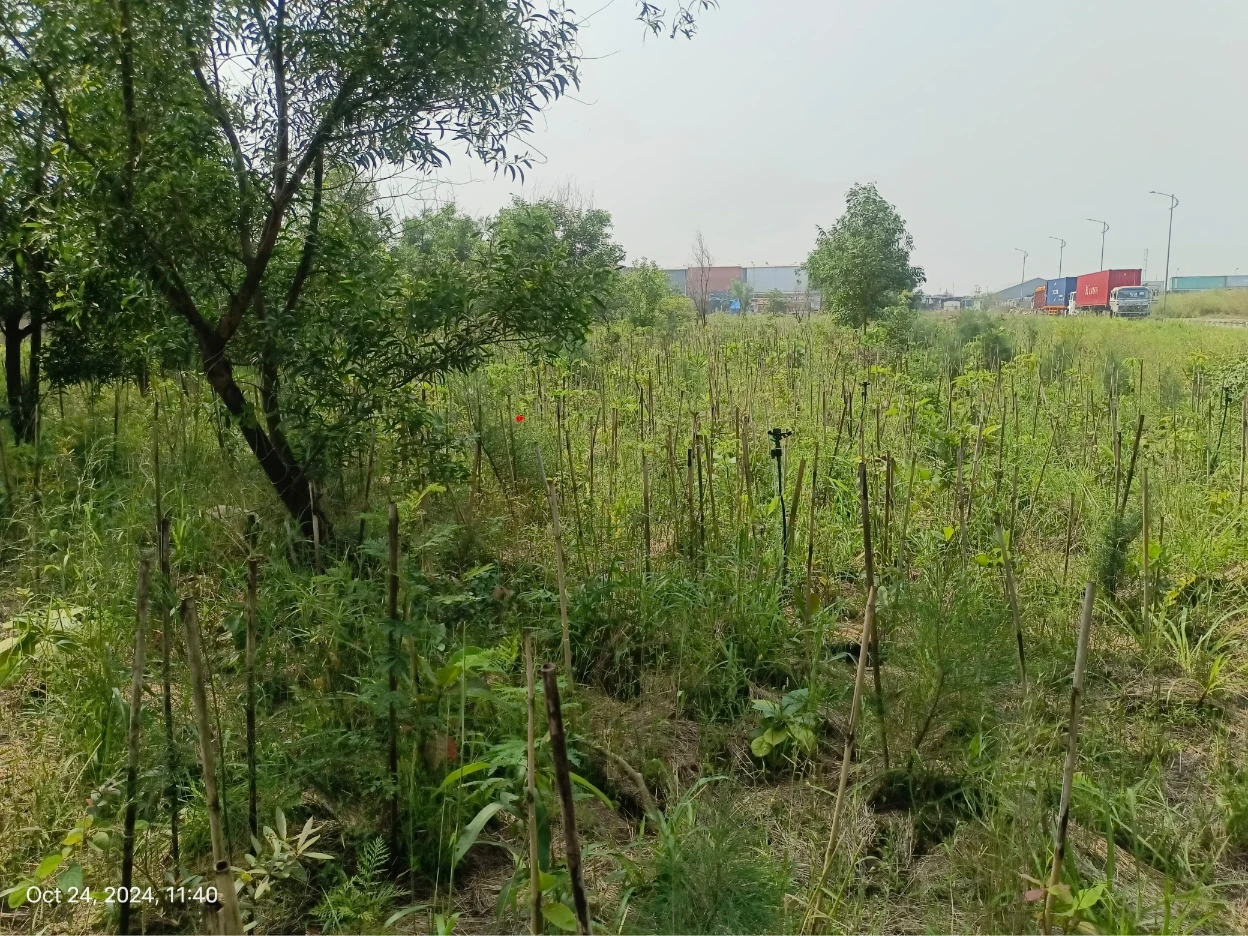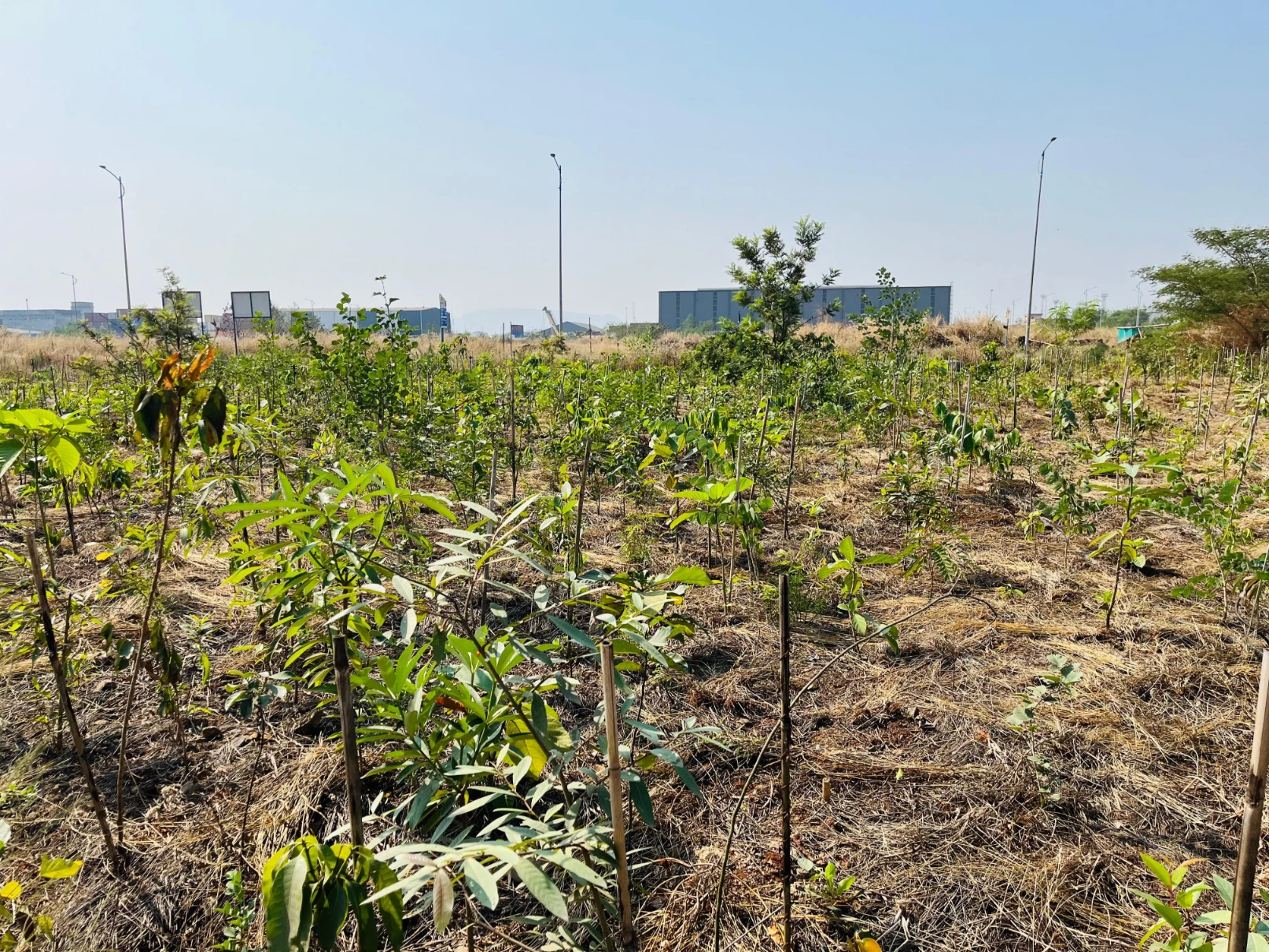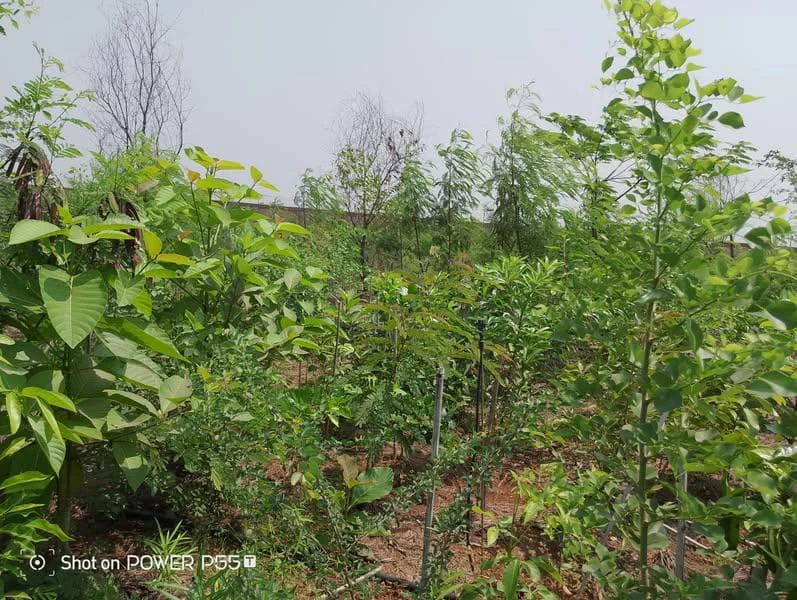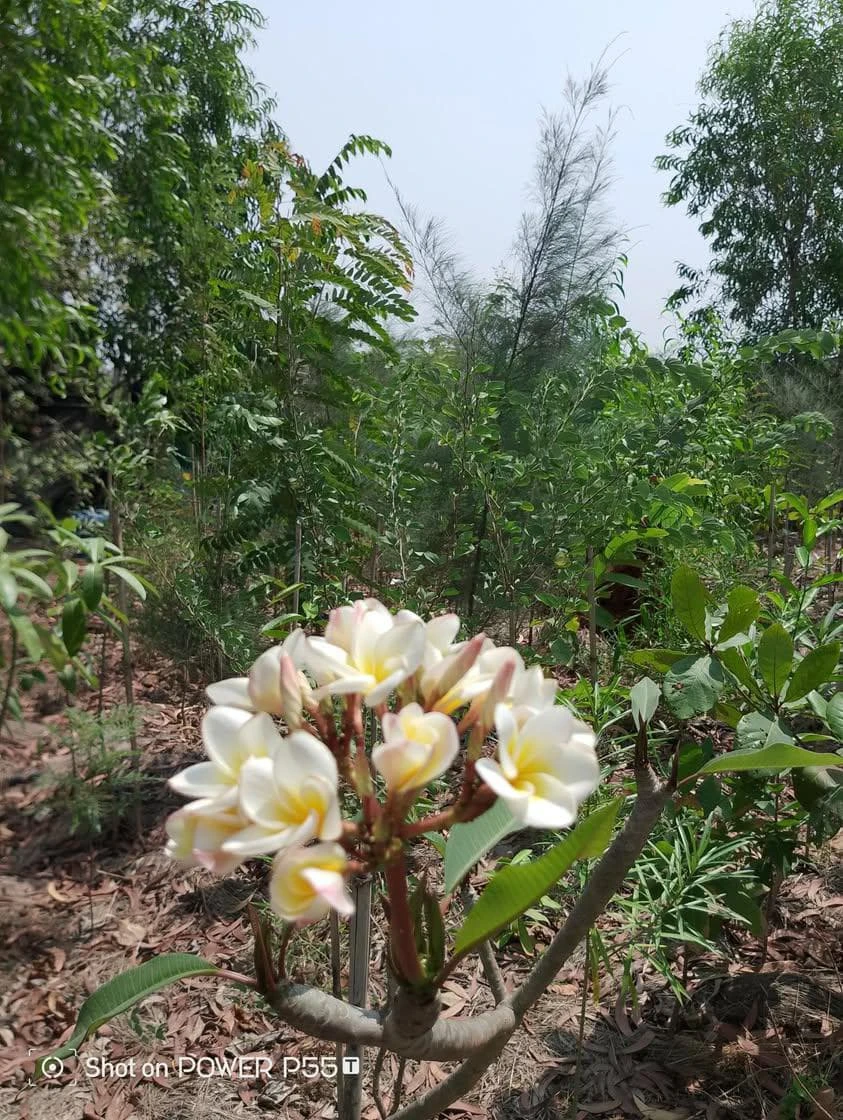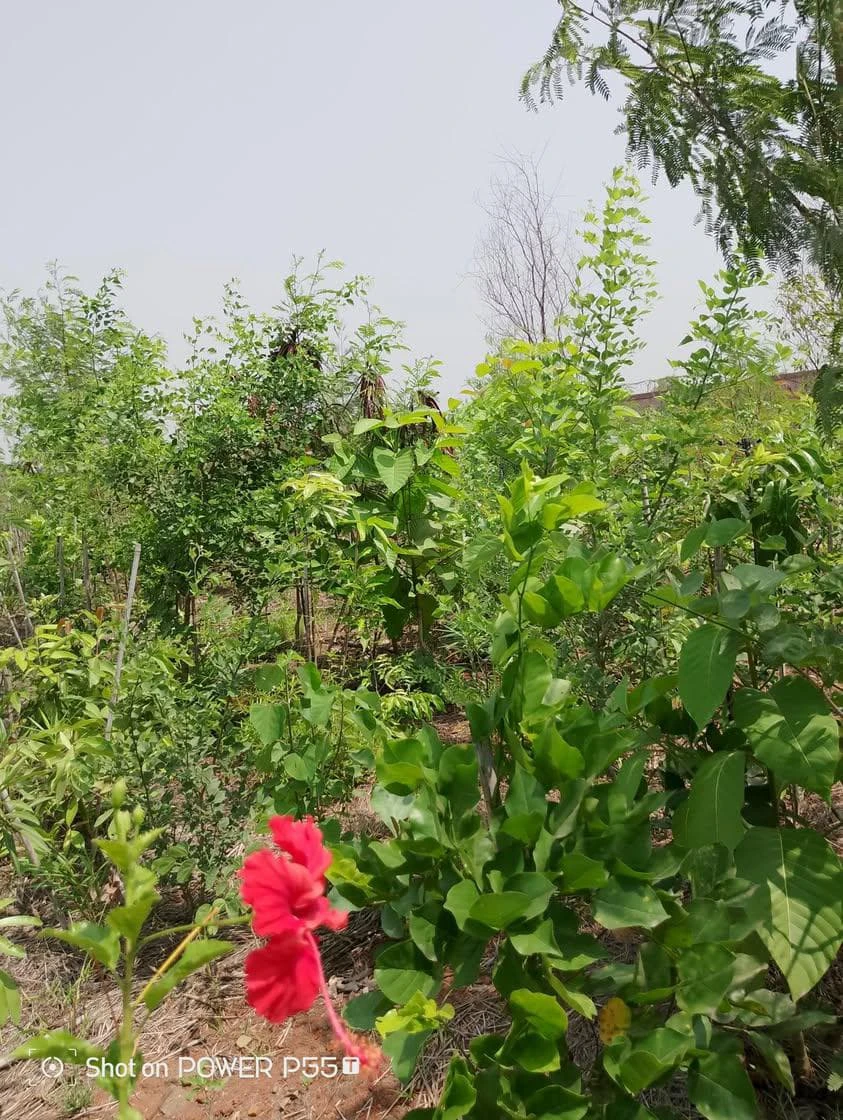Location: Jawaharlal Nehru Port SEZ, Nhava Sheva Project Overview – At the heart of one of India’s largest and most industrialized ports, Forest Creators took on an ambitious challenge: converting a barren, salt-affected site at JNPT SEZ into a thriving, biodiverse forest using the Miyawaki method. Partnering with SBI Foundation and JNPA under the initiative SBIF CONSERW: ARANYA, the goal was not just to plant trees, but to create a self-sustaining ecosystem that would restore the natural balance and support JNPA’s vision of becoming a Green Port. Jawaharlal Nehru Port Authority (JNPA) is aware of the environmental impact associated with its operations—including emissions, dust, and land degradation. Recognizing its responsibility toward environmental stewardship, JNPA undertook this initiative not just to enhance green cover, but to actively give back to the ecosystem it operates within. The Miyawaki forest project reflects JNPA’s commitment to mitigating its ecological footprint, restoring biodiversity, and setting a precedent for sustainable port development across the country. Key Challenges – Solutions by Forest Creators –: Impact – This project is a testament to Forest Creators’ deep ecological knowledge, scientific approach, and operational discipline. By turning one of Maharashtra’s most industrial sites into a green sanctuary, Forest Creators have not only proven the power of the Miyawaki method at scale—they’ve demonstrated what sustainable resilience truly looks like. Before Forest Creator – After Forest Creator – Transforming Barren Land into Biodiversity — The JNPT Miyawaki Forest Project
By Forest Creators | In collaboration with SBI Foundation & Jawaharlal Nehru Port Authority (JNPA)
Total Area: 7 acres
Saplings Planted: 1,09,220 (Target: 1,00,000)
Species Used: 50+ native varieties
Survival Rate: 100%
Carbon Sequestration: Approx. 2,700 tonnes of CO₂ annually
Average Height (At time of plantation): 1.5~3 feet
Average Height (Currently): 3~8feet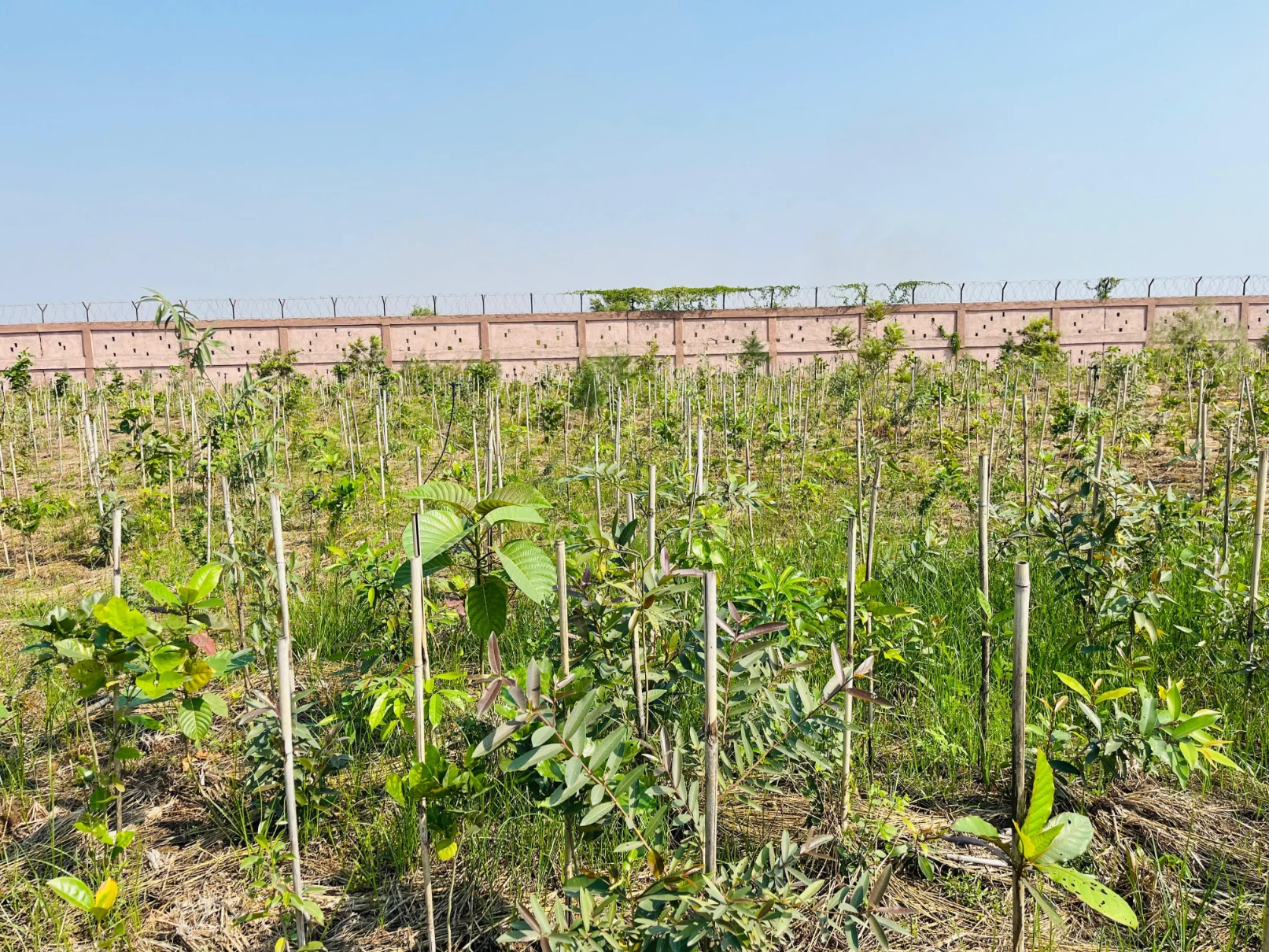
The soil was heavily compacted and lacked essential nutrients and microbial activity—conditions unsuitable for natural forest growth.
The site’s proximity to the sea meant high salinity levels in the soil and air, with harsh winds and humidity fluctuations that could stunt plant development.
Planting over 1 lakh saplings on 7 acres, while working within an active Special Economic Zone, demanded detailed logistical planning and time-sensitive execution.
Authorities and local partners were initially unsure if the Miyawaki method—typically used on smaller plots—would succeed on such a large, coastal, industrial site.
Forest Creators enriched the soil using a scientifically balanced mix of organic compost, biochar, cocopeat, and beneficial microbes. This simulated forest-floor conditions and supported deep root development.
Only salt-tolerant native species were selected. Mulching was used to retain soil moisture, and natural windbreak rows were planted to protect young saplings from coastal winds.
To manage the scale, the area was divided into micro-zones with phased plantation schedules and quality control teams ensured proper density, species diversity, and care.
Forest Creators organized on-site visits, training workshops, and shared data on growth rates and ecological success from earlier projects. As survival rates soared and greenery emerged, skepticism turned into strong support.
